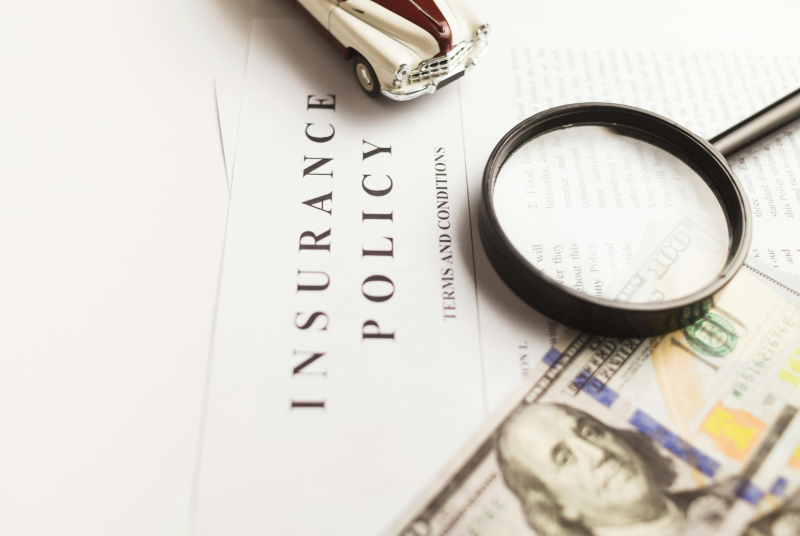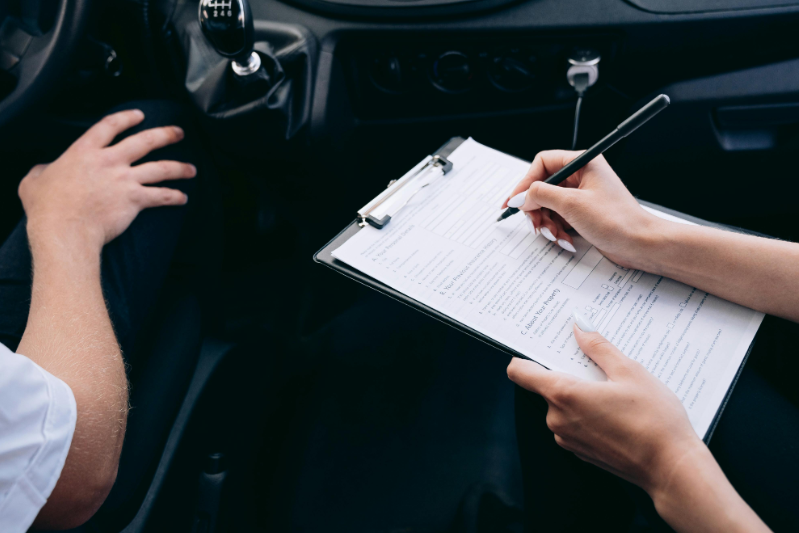Buying a new car is exciting! The smell of fresh upholstery, the gleaming paintwork, the promise of new adventures on the open road. But amidst the excitement, there are also important financial decisions to be made, and one that often gets overlooked, but shouldn’t, is Guaranteed Asset Protection (GAP) insurance.
You might have heard the term, perhaps fleetingly mentioned by a dealership finance manager, and dismissed it as just another add-on. However, understanding GAP insurance and knowing how to purchase it wisely could save you thousands of pounds in a worst-case scenario.
This guide will walk you through everything you need to know about purchasing GAP insurance, ensuring you make an informed decision that protects your financial well-being.
What exactly is GAP insurance?

Let’s start with the basics. Imagine you buy a brand-new car for £30,000. Unfortunately, six months later, your car is stolen or written off in an accident. Your standard comprehensive car insurance policy will typically pay out the current market value of your car at the time of the loss, not what you originally paid for it.
Due to depreciation, that £30,000 car might now only be worth £22,000. If you still owe £28,000 on your car loan, you’re left with a £6,000 shortfall (£28,000 loan – £22,000 insurance payout). This is known as “negative equity.”
GAP insurance bridges this “gap.” It covers the difference between your car’s market value (what your standard insurer pays out) and either the original purchase price or the outstanding finance balance, depending on the type of policy.
Why should you consider GAP insurance?
While it’s an additional cost, GAP insurance offers crucial financial protection, especially if:
- You’ve bought a new car: New cars depreciate quickly.
- You have a long finance agreement: The longer the term, the more likely you’ll be
- You’ve paid a small deposit (or no deposit): This means a larger loan amount to begin with.
- You’ve rolled negative equity from a previous car into your new finance deal:** This immediately puts you in a vulnerable position.
- You’re leasing a car: Many lease agreements hold you responsible for the difference if the car is written off.
Types of GAP insurance

Before you buy, it’s essential to understand the different types of GAP insurance available:
- Return to Invoice (RTI) GAP Insurance: This is the most common type. It pays the difference between your comprehensive insurer’s payout and the original invoice price you paid for the vehicle.
- Return to Value (RTV) GAP Insurance: Similar to RTI, but instead of the invoice price, it covers the difference up to the Glass’s Guide retail value of your vehicle when you originally purchased it. This is often used for used cars where an invoice price might be less relevant.
- Vehicle Replacement Plus (VRP) GAP Insurance: This type aims to get you into a brand new, equivalent replacement vehicle. It covers the difference between your insurer’s payout and the cost of replacing your vehicle with a brand new one (even if the price has increased).
- Finance GAP Insurance: This is designed specifically for financed vehicles. It covers the difference between your insurer’s payout and the outstanding balance on your finance agreement.
- Lease GAP Insurance: Tailored for leased vehicles, this covers the difference between your insurer’s payout and the remaining payments and any early termination fees on your lease agreement.
Where can you purchase GAP insurance?
You have a few options when it comes to buying GAP insurance, each with its pros and cons:
1. Car dealership:
- Pros: Convenient, can be arranged at the point of sale.
- Cons: Often the most expensive option. They may have limited providers and may pressure you into buying.
2. Independent Insurance Brokers/Specialist GAP Insurance Providers
- Pros: Usually much more competitive prices, wider range of policies, unbiased advice, and can tailor policies to your specific needs.
- Cons: Requires a bit more research and a separate transaction after your car purchase.
3. Your car insurance provider
- Pros: Some mainstream insurers offer GAP as an add-on to your comprehensive policy. It can be convenient.
- Cons: Not all do, and their offerings might not be as comprehensive or competitive as specialist providers.
Your step-by-step guide to purchasing GAP insurance
1. Understand your needs
- How much did you pay for the car (or what’s its current value)?
- What is your outstanding finance balance?
- Are you buying new, used, or leasing?
- Knowing these figures will help you determine which type of GAP insurance is most suitable.
2. Do your research (crucial!)
Do NOT buy at the dealership on the spot. UK regulations give you a “deferred opt-in” period, meaning a dealership cannot sell you GAP insurance on the same day you agree to buy your car. This is to prevent pressure selling. Take advantage of this time.
- Get quotes from several independent GAP insurance providers online. Compare their policy terms, coverage limits, and pricing.
- Read reviews of the providers.
- Compare policies, not just price
- Check the policy term: Does it cover the full length of your finance agreement or lease?
- Look at the maximum payout: Is it enough to cover your potential shortfall?
- Understand exclusions: Are there any circumstances where the policy won’t pay out? Common exclusions can include vehicles used for hire or reward, pre-existing damage not repaired, or exceeding mileage limits.
- Consider your excess: Is there an excess on the GAP policy itself?
- Is it transferable? If you sell your car, can the policy be transferred to the new owner, or can you get a pro-rata refund?
- Read the small print
Before committing, thoroughly read the policy wording document. If anything is unclear, contact the provider for clarification.
- Purchase your policy
Once you’ve found the right policy at a competitive price, purchase it directly from the provider. Many can be bought online within minutes.
Key considerations before you buy

- Cost vs. benefit: While an extra expense, consider the potential financial disaster of being left with a substantial debt and no car.
- “Free” cover from the dealership: Some dealerships offer free GAP insurance for a short period (e.g., 12 months). While this is a nice bonus, remember it’s typically limited, and you’ll still need to consider your options for longer-term cover.
- Your personal circumstances: If you’re paying cash for an older, low-value used car, GAP insurance is unlikely to be necessary. It’s most relevant for new or nearly new vehicles with significant financing.
GAP insurance might not be the most glamorous part of buying a car, but it’s undoubtedly one of the most practical. Taking the time to understand your options and shop around can save you from a potentially crippling financial burden should the unexpected happen. Drive away with confidence, knowing you’re fully protected.
Speak to Protect Your Family today to understand your options and secure the peace of mind you deserve. Gap insurance is a small investment that can provide significant financial security down the road, ensuring that an unfortunate event doesn’t leave you in a deep financial hole.
I’m Laura Wilson, a passionate blogger and content creator with a deep interest in business, finance, and entrepreneurship. I’ve had the opportunity to write for several premium blogs, sharing insights & practical advice for individuals & small businesses. I’m the founder and publisher of ukbusinessmag.co.uk, where I focus on creating valuable, easy-to-understand content to help UK startups & SMEs grow.



